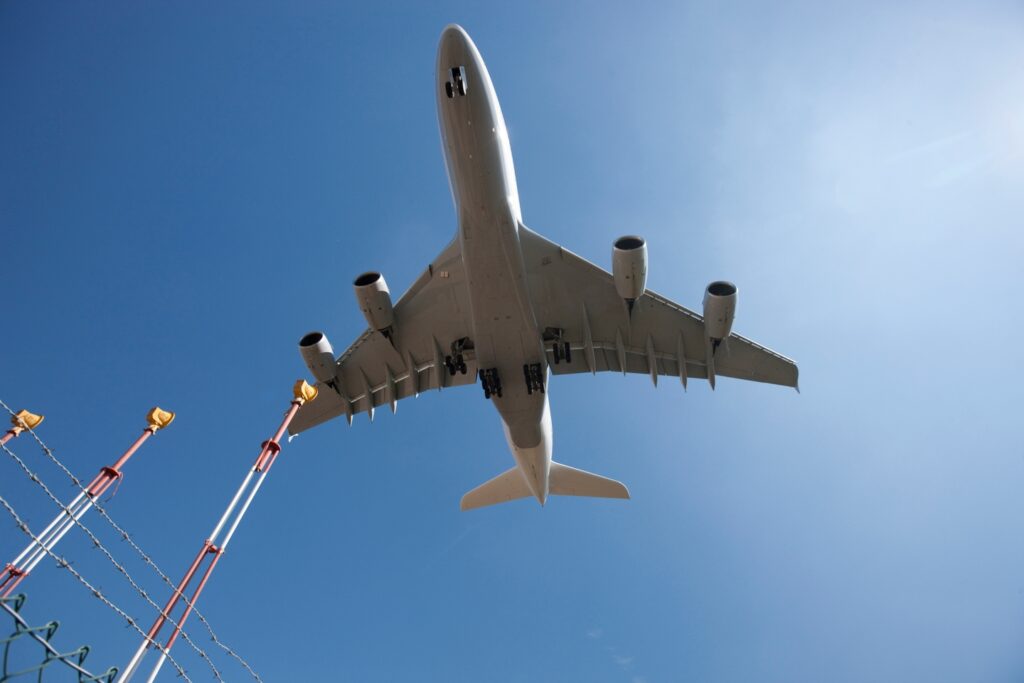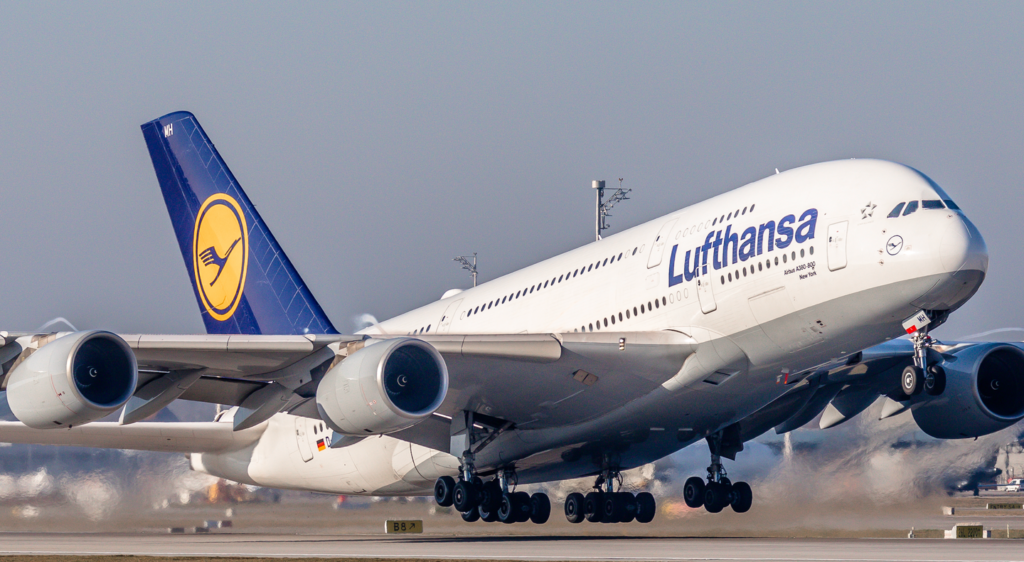Blog
Lufthansa Mid-Air Scare: Pilotless Flight Sparks Aviation Safety Concerns

In a rare and deeply alarming incident, a Lufthansa Airbus A321 carrying over 200 passengers flew without a conscious pilot at the controls for nearly ten minutes. The unsettling event took place in February 2024 during a scheduled flight from Frankfurt, Germany to Seville, Spain. What started as a routine journey ended in an emergency diversion and has since sparked serious questions about cockpit safety protocols, pilot health assessments, and the future of flight deck design.
While the aviation world is no stranger to emergencies, this particular incident stands out because of the circumstances: not mechanical failure, not a security breach, but an unexpected and dangerous incapacitation of a crew member. The Spanish aviation authorities have now released their final report, providing critical insights into what went wrong, how the situation was handled, and what must change to prevent such occurrences in the future.
The Flight: From Routine to Emergency in Minutes
Flight LH1116, operated by Lufthansa on an Airbus A321, departed from Frankfurt in the early hours of February 11, 2024. Everything was smooth as the aircraft climbed to cruising altitude and continued its journey toward Seville. The cockpit was manned by two experienced pilots: a captain with over a decade of flying experience and a 38-year-old first officer.
According to the investigation report released on May 15, the incident occurred during the final leg of the journey, with roughly 30 minutes left before the scheduled arrival in Seville. At that time, the captain exited the cockpit for a brief bathroom break. This is a standard procedure, during which the co-pilot remains in full command of the aircraft.
However, what followed was anything but standard.
A Locked Cockpit and No Response
When the captain returned just eight minutes later, he discovered that the cockpit door was locked — as expected due to standard security measures — but more worryingly, there was no response from the first officer inside. He entered the secure code for re-entry multiple times. Simultaneously, a flight attendant attempted to contact the first officer via the intercom. Still, there was complete silence from the cockpit.
Lufthansa aircraft are equipped with a timed entry override function, a security feature introduced after the Germanwings tragedy in 2015, when a co-pilot deliberately locked out the captain and crashed the plane. This function allows cabin crew or the captain to trigger an emergency code for entry if there’s no response from the cockpit after a certain amount of time.
Unfortunately, in this case, the timed entry feature had already expired by the time the override was attempted. The plane, with more than 200 lives onboard, was now in the air with no pilot actively controlling it.
What Happened Inside the Cockpit?
The mystery deepened until, nearly ten minutes later, the cockpit door finally opened. The first officer emerged, visibly distressed, pale, and sweating profusely. The captain, who described his colleague as “unwell and disoriented,” resumed control of the flight immediately and declared a medical emergency. The decision was made to divert to Madrid, which was closer than Seville and better equipped for emergency landings.
A doctor among the passengers assisted the cabin crew in stabilizing the first officer. Upon landing, emergency services rushed the co-pilot to a nearby hospital. Medical evaluations later confirmed that he had suffered a neurological seizure — a previously undiagnosed condition that led to a sudden and severe blackout during a critical phase of the flight.
The Medical Diagnosis: A Wake-Up Call for Aviation
The first officer was diagnosed with a seizure disorder, raising immediate red flags about the rigor and frequency of medical checks in the aviation industry. While commercial pilots are required to undergo regular health evaluations, some conditions — especially those that are intermittent or hard to detect — can go unnoticed. In this case, the co-pilot had no known history of seizures or neurological conditions.
Seizures present a unique challenge for aviation regulators. They can occur without warning, and once diagnosed, they often disqualify a pilot from commercial flying. However, if undiagnosed, they pose a potentially catastrophic risk not only to the individual pilot but to everyone on board.
This incident is now prompting a larger conversation about enhancing the screening processes for pilots, including the potential incorporation of more advanced neurological testing, especially for individuals over a certain age or with family histories of related disorders.
Aviation Industry Reacts: Calls for Policy Overhaul
The European Union Aviation Safety Agency (EASA), along with national aviation authorities in Germany and Spain, is now under pressure to review current regulations. Experts argue that several aspects of cockpit security and pilot health need to be revisited.
First, there’s the issue of single-pilot presence in the cockpit. Following the Germanwings incident in 2015, several airlines, including Lufthansa, temporarily implemented a policy requiring at least two people in the cockpit at all times. That rule was later relaxed in Europe, though it remains in place in some other jurisdictions. Critics are now calling for its reinstatement, particularly during times when a pilot needs to step out briefly.
Second, aviation analysts are suggesting improvements to the emergency cockpit access systems. The current timed override feature, while necessary for security, may need to include an additional layer that allows for quicker intervention in medical emergencies. Flight deck doors are designed to withstand forced entry for safety reasons, but in this case, that same design nearly led to disaster.
Finally, this incident highlights the growing need for airlines to invest in continuous health monitoring technology for their crew. Wearable health trackers or biometric data systems could potentially alert flight management systems in real-time if a pilot becomes incapacitated or unresponsive, providing a new layer of safety for all onboard.
Passenger Safety and Public Confidence
News of a plane flying without an alert pilot for ten minutes is undoubtedly unsettling for the flying public. While it’s important to stress that the aircraft remained in stable flight mode and was in no immediate danger of crashing, the idea of an empty cockpit mid-air is deeply unnerving.
Modern aircraft like the Airbus A321 are equipped with autopilot systems capable of maintaining altitude, heading, and speed for extended periods without manual input. In this case, the autopilot kept the plane on course while the cockpit remained unmonitored. But autopilot is not a replacement for human oversight, especially during final descent and landing phases when quick decisions might be required.
In response, Lufthansa has issued a statement acknowledging the incident and confirming that they are fully cooperating with authorities. The airline also indicated that they are reviewing their internal safety procedures and crew health protocols. Passenger confidence, while shaken, may be restored through greater transparency and tangible policy improvements.
A Broader Conversation About Automation in Aviation
The Lufthansa incident also reopens the ongoing debate about the role of automation in modern aviation. While some in the industry advocate for increased reliance on autopilot systems — and even the possibility of single-pilot or remotely piloted commercial flights — this event underscores the critical role of human presence and decision-making in the cockpit.
The notion of a “pilotless” commercial flight still meets considerable resistance, particularly from passengers and pilot unions. Incidents like this one may be used to argue both sides of the debate: some may claim that automation successfully maintained flight stability during a critical moment, while others will point out the irreplaceable value of having two alert human pilots at all times.
Moving Forward: Lessons and Precautions

The Lufthansa scare of February 2024 is a sobering reminder that aviation, despite being one of the safest forms of transportation, is not immune to rare but high-stakes failures. Fortunately, thanks to the aircraft’s systems and the eventual regaining of consciousness by the first officer, a potential disaster was averted. But the implications remain significant.
From stronger medical vetting of flight crews to renewed discussions around cockpit staffing protocols and smarter emergency access systems, the ripple effects of this incident are likely to be felt industry-wide. It also raises awareness among passengers about the layers of safety — and vulnerability — involved in air travel.
As regulators, airlines, and pilots reassess procedures in light of this event, the goal must be clear: ensuring that even rare incidents like this one are met with better-prepared systems, smarter safeguards, and robust health evaluations to keep passengers and crew safe at 35,000 feet.
FAQs
The co-pilot lost consciousness, leaving the cockpit unattended for about 10 minutes.
Yes, the aircraft was on autopilot but without human supervision for nearly 10 minutes.
The cockpit door lock timed out and the first officer didn’t respond to entry attempts.
Doctors later confirmed it was a neurological seizure.
Yes, it was diverted to Madrid and landed without incident.
-

 Blog3 years ago
Blog3 years ago10 Celebrities and Their Equally Gorgeous Siblings
-

 Blog3 years ago
Blog3 years agoThe highest-paid actors of all time are living large
-

 Blog3 years ago
Blog3 years agoHollywood Stars’ Instagram Photos viciously replayed
-

 Blog3 years ago
Blog3 years agoUpsetting And Creepy Facts We Wish We Could Erase From Our Memory
-

 Blog3 years ago
Blog3 years agoBecome Star Quality With These Celebrity Morning Routines
-

 Blog3 years ago
Blog3 years agoSome of Hollywood’s best-known movies have secrets that will shock you
-

 Blog3 years ago
Blog3 years agoThese Celebrity Couples Did Some Bizaree Things In The Name Of Love
-

 Blog3 years ago
Blog3 years agoUsing Everyday Items These People Made The Most Amazing DIY Creations
